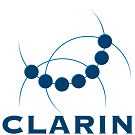Historical corpora: Difference between revisions
| Line 40: | Line 40: | ||
*[https://taalmaterialen.ivdnt.org/download/brieven-als-buit-2021/ Download page] | *[https://taalmaterialen.ivdnt.org/download/brieven-als-buit-2021/ Download page] | ||
*[http://brievenalsbuit.ivdnt.org/corpus-frontend/BaB/search/ Online search] | |||
*Corpus download page: http://brievenalsbuit.ivdnt.org | *Corpus download page: http://brievenalsbuit.ivdnt.org | ||
Revision as of 15:13, 9 March 2021
Before 12th century: Corpus of Old Dutch
The Corpus of Old Dutch is the collection of all texts in Old Dutch that served as source material for the Dictionary of Old Dutch (ONW). The texts originate from the period between 475 and 1200.
The texts in Old Dutch that Maurits Gysseling had collected and transcribed formed the basis of this collection. They have been supplemented with texts like the Mittelfränkische Reimbibel, glosses like the Malbergse glossen to the Lex Salica, and anthroponymic and toponymic material. The corpus has been annotated with word classes and lemmas. The annotation of the entire corpus has been manually verified. What is Old Dutch
Old Dutch is the collective term for several related dialects that – just like Old English, Old Frisian, Old Saxon, and Old High German – developed out of West Germanic around the beginning of the fifth century. It was spoken in an area that does not entirely correspond with the current Dutch-speaking region.
Differentiating between Old Dutch, Old Saxon, and Old Frisian is sometimes difficult. The editors of the Dictionary of Old Dutch, who were responsible for the compilation of the corpus, applied a liberal admission policy. Nevertheless, not all texts from Gysseling’s original Old Dutch collection were incorporated into the corpus. One example is the Heliand, a poem that was left out because it was written in Old Saxon.
13th century: Gysseling Corpus
The Gysseling Corpus is the collection of all 13th-century texts that have served as source material for the Dictionary of Early Middle Dutch (VMNW). The corpus consists mainly of official and literary sources of thirteenth-century texts that have been handed down in 13th-century manuscripts.
The texts are diplomatic editions, which means that the source texts have been rendered in modern script as accurately as possible. The corpus has been linguistically annotated with word classes and modern Dutch lemmas (entry words) to enhance its searchability. The annotation of the entire corpus has been manually verified.
14th - 16th century: Corpus of Middle Dutch
The Corpus of Middle Dutch is a collection of rhyming texts and prose from the period of 1300-1550. It contains classics such as Beatrijs, Van den vos Reynaerde, the abele spelen, the stories about King Arthur and about Charlemagne, all texts from the famous Gruuthuuse manuscript (including the Egidius song), but also many of the lesser known or less researched texts, such as prose adaptations of the rhyming knight’s tales (the so-called ‘folk books’), collections of songs such as the Antwerp Songbook, various Bible translations, hagiographies, books of prayer, chronicles, and all kinds of religious, didactic and scientific treatises, medical manuals and recipes.
The corpus was compiled on the basis of mainly critical, scientifically sound text editions. In time, it will be annotated with word classes and lemmas, to improve searchability.
17th - 19th century: Letters as Loot
Approximately 40,000 Dutch letters from the second half of the 17th to the early 19th century have been gathering dust for centuries in British archives. They were sent home by sailors and others from abroad but also vice versa by those staying behind who needed to keep in touch with their loved ones. Many letters did not reach their destinations: they were taken as loot by privateers and confiscated by the High Court of Admiralty during the wars fought between The Netherlands and England. These confiscated letters of men, women and even children represent priceless material for historical linguists. They allow us to gain access to the as yet mainly unknown everyday Dutch of the past, the colloquial Dutch of people from the middle and lower classes.
The first extensive sociolinguistic analysis of these Dutch letters was conducted in the Letters as Loot research programme (2008-2013) at Leiden University. This research concentrated on a selection of about one thousand Dutch private letters from the late seventeenth and late eighteenth centuries, written by more than 700 different letter writers.
- Download page
- Online search
- Corpus download page: http://brievenalsbuit.ivdnt.org
20th century: The VU-DNC Corpus
A diachronic Dutch newspaper corpus (VU Free University Dutch Newspaper Corpus). (More info under Newspaper corpora)
